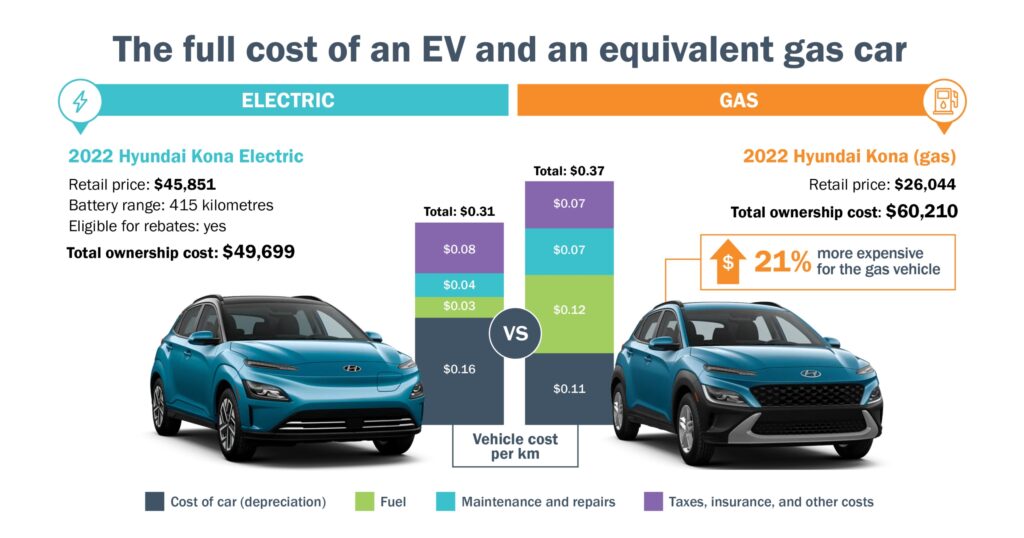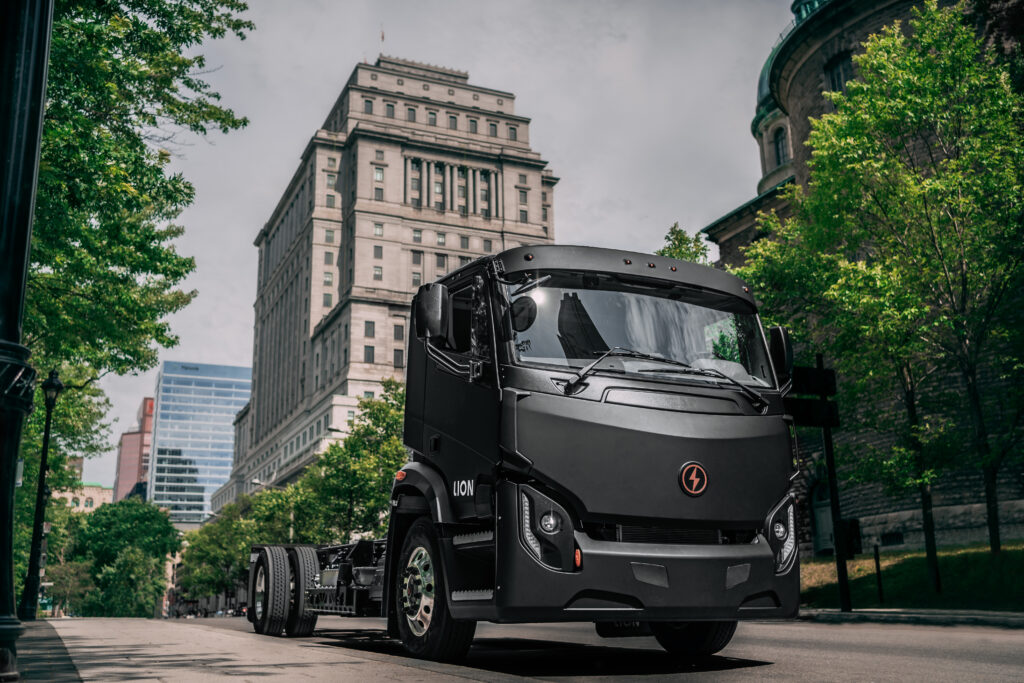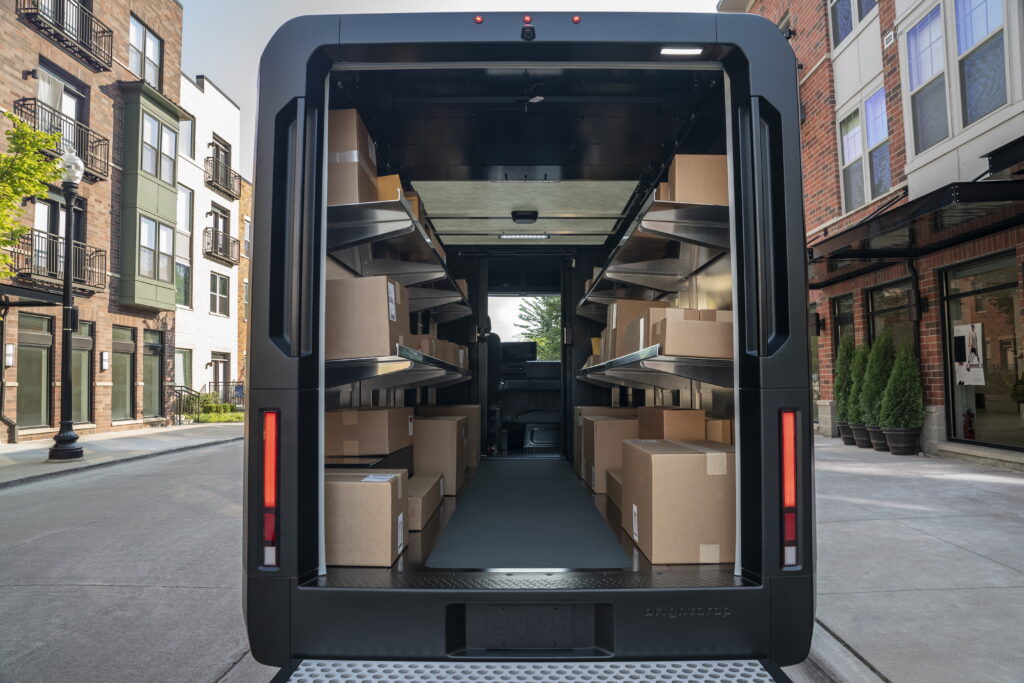The cost to charge an EV depends on your location and vehicle.
Earlier this year, Autotrader calculated how much it costs to drive 100 kilometres in a compact car (Hyundai Kona EV, which uses 17.4 kWh to drive 100km), an SUV (Ford Mustang Mach-E), and hybrid and PHEVs (Toyota RAV 4 Hybrid and RAV 4 Prime).
The cost analysis found that 100 kilometres of range cost $2.44 for the Kona Electric, $3.24 for the Mustang Mach-E, and $5.17 for the RAV4 Prime (based on the national average cost for charging an EV at home). All figures were significantly less than their gas counterparts — nearly five times less in the case of the battery-electric vehicles.
If you’re charging a more fleet-forward vehicle such as a Ford E-Transit van, which has a 68 kWh battery pack and targeted range of 203 kilometres, “filling up” from empty at a busy depot in Ontario will cost less than $10. To get a picture of how much it costs to charge your fleet and your savings over time, use our fuel cost calculator which integrates provincial gas prices and electricity rates.
Want to learn more? Sign up or log in so you can track your progress, earn a course certificate and receive exclusive invitations to our live learning sessions.



